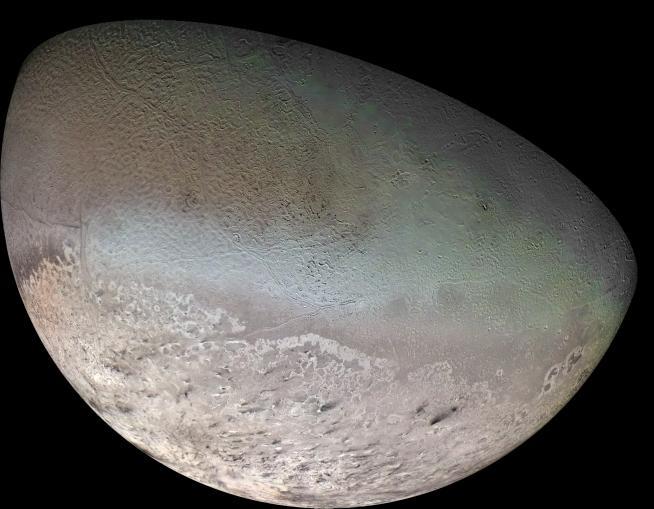
NASA has proposed sending a spacecraft to Neptune in order to study its largest moon, Triton, up close. Representative’s from NASA’s Jet Propulsion Lab (JPL) announced the plan at a the Lunar and Planetary Science Conference in Texas last week.
In the 1980s, NASA explored Neptune and Triton with a brief flyby in the Voyager 2 spacecraft. Interesting findings included the presence of active geysers on Triton, which makes it one of the few geologically active moons in our Solar System, and the fact it was discovered to be extremely cold, with surface temperatures of a bracing -391 degrees Fahrenheit (-235 degrees Celsius).
One factor that makes Triton an appealing mission target is that scientists believe it may host an ocean, indicating that the conditions for life could be found in unexpected places in our Solar System. They also think that Triton was a Kuiper Belt Object (KBO) that was captured by Neptune’s gravity and was pulled into orbit, becoming a moon. This gives the opportunity to study KBOs without having to travel as far as other missions like New Horizons.
Studying Triton could offer clues to how liquid water is maintained on planets and moons. Given that Triton is so cold, it is theorized that there could be water in its oceans at very low temperatures because of the presence of ammonia, which would lower its freezing point. Studying this phenomenon might indicate what to look for when searching for life beyond our own planet.
“The time is now to do this mission,” Louise Prockter, director of the Lunar and Planetary Institute in Houston and the principal investigator of the proposed mission, said, according to the New York Times. “The time is now to do it at a low cost. And we will investigate whether it is a habitable world, which is of huge importance.”
The JPL team hope to visit Triton under NASA’s Discovery program, which funds missions that cost less than $500 million. Missions for the program are launched every two years, and the current mission is the highly successful InSight lander which has been exploring Mars since it landed last year. Other proposals for the program include surveying the moon, visiting Jupiter’s moon Io, or returning to the planet Venus.



